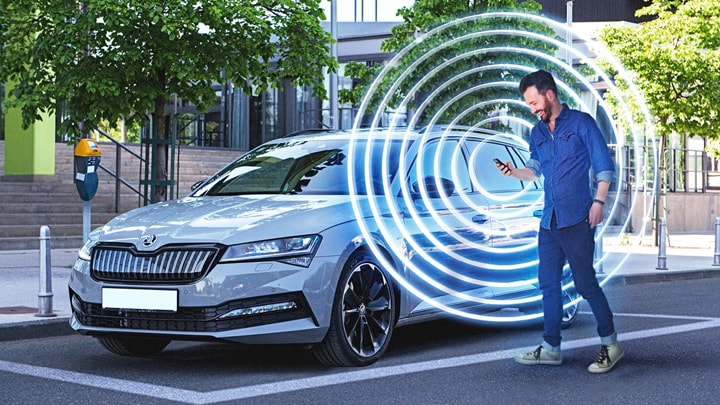Our perception of vehicles and how they function is changing drastically. Vehicles are becoming increasingly autonomous,
electric and service-oriented, allowing a growing degree of customization and upgradability for the end user. The underlying
revolution is that vehicles will be software-defined. Simply put, all functions will be designed, tested, validated and possibly
modified on a virtual model that will exist alongside the physical car throughout its lifetime.
This revolution will require a deep transformation of vehicle architecture. Besides making vehicle development faster and
easier, it will also offer OEMs new, attractive business opportunities through data-driven services that appeal to a generation
of users who are more familiar with subscription-enabled features. In essence, mobility becomes a service to enhance the user
experience over time, enabled by cutting-edge solutions including Networking Solutions, MCUs and PMICs.
How SDVs are transforming the driving experience
| Post-sale feature upgrades |
Improved battery range on EV; new assisted-driving features |
| Convenience features |
User based insurance; remote diagnostics |
| Rapid innovation |
The ability to quickly deploy new features into a car |
| Location-based services |
Car connected to parking infrastructure |
| Vehicle personalization |
Automatically start the heater in case of cold weather |
| Customizable cabin environment |
Setting ‘profiles’ for drivers (e.g. seat, HVAC, HMI screen) |
The Scope of Architecture Zonalization
Instead of adding new functions with boxes (ECUs), those functions will be downloaded from the cloud inside a flexible HW with
over-the-air (OTA) updates. This allows for continuous integration and continuous deployment (CI/CD). To make this possible,
vehicle E/E architectures are evolving from a flat distribution of separate functions into more a modern domain and then zonal
structure.
“Zonalization” clusters modules and connections in physical areas of the vehicle, while transferring most of processing power in
a central vehicle computer. It will provide many benefits as it reduces wiring cost and weight, and provides a scalable and
centralized software. This will lay the foundation for accelerated innovation in vehicles driven by software and over-the-air
updates.
 Architectural evolution trend: from domain to zonal
Architectural evolution trend: from domain to zonal
Why Zonal E/E Architecture Is Ideal for Software-Defined Cars?
Think about a sensor to be used for different domains (e.g. camera for ADAS and infotainment). What would be the best way to
share this sensor? The path is complex in a domain architecture. In a distributed architecture that is more friendly, sensor
data is presented as a service to all virtual machines. Each zonal ECU becomes a sensor server.
This approach also makes it easier to establish a chain reaction of events in case of contingencies. For instance, in an emergency braking situation: a combination of radar, camera or lidar sensors confirm there is an unexpected object in front of the vehicle. The braking system is immediately engaged but if the ADAS computer realizes there may be an accident the vehicle starts to get ready just in case, and triggers the infotainment system to play a visual and audio alarm notification. The seat belts tighten, the airbags get ready, the windows are lowered and the alarm signal lighting is engaged, all simultaneously and instantaneously over the zonal / domain Ethernet network.
Possibilities: Ethernet Connects Them All
The consequence of zonalization is that all data is turned into Ethernet frames and made available to all domain controllers on
the backbone. You can reuse functionalities for different virtual functions and virtual machines. You can also move tasks and
complete virtual machines depending on CPU loading or power situations (load balancing, which is important for EVs). All of
these are possible with a wide adoption of Ethernet-based networks and components.
NXP offers a complete portfolio of network solutions of Ethernet PHYs ranging from 10/100/1000 BASE-T and multi-gig Ethernet
PHYs and integrated and digital Ethernet switches. To unlock system expertise that provides quick time-to-market, OEMs and Tier
1s can benefit from our vast automotive experience combined with system solution offerings that include Ethernet PHYs, Ethernet
Switches, aggregator MCUs, gateway processors and PMICs.





